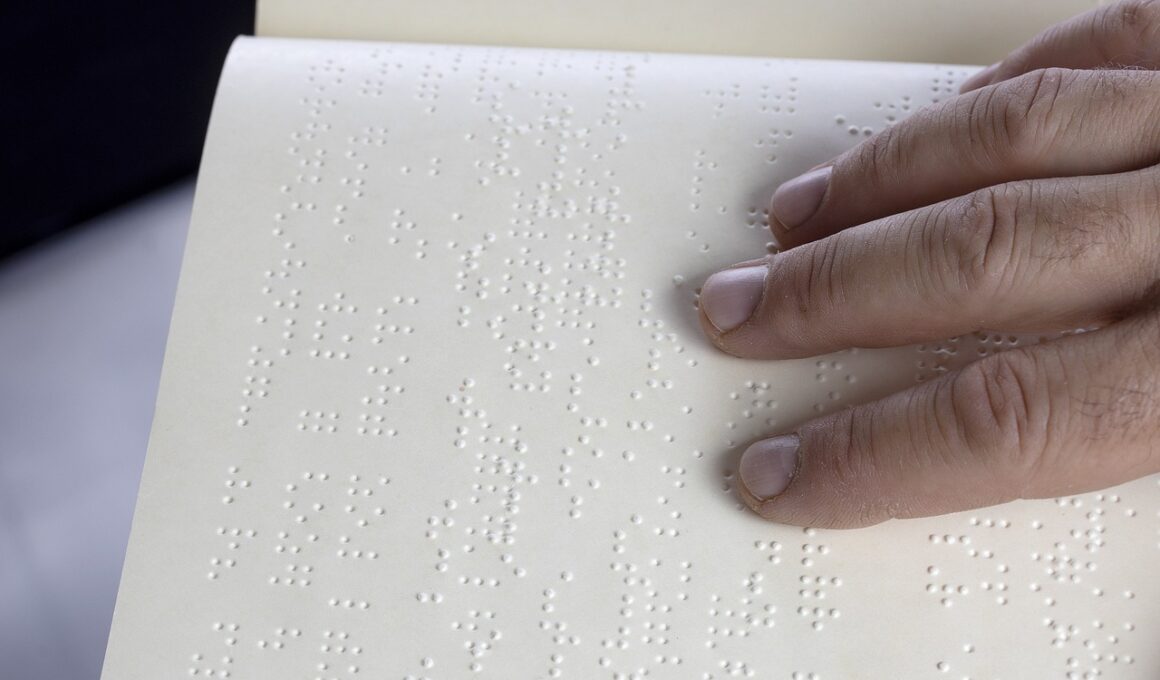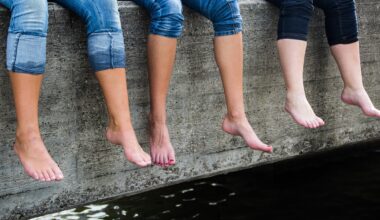Developing Confidence Through Adaptive Physical Education
Adaptive physical education programs serve a vital role in enhancing the physical skills and emotional well-being of students with visual impairments. These tailored programs focus on creating a supportive environment where students actively engage in various sports and fitness activities. Activities designed with specific objectives not only accommodate visual impairments but also foster independence, self-esteem, and social interaction. Students learn essential skills that translate into real-life applications, promoting not just physical fitness but also overall confidence. Furthermore, participation in adaptive PE encourages teamwork, enhancing social bonds among peers. Building relationships through shared experiences is crucial for individuals with disabilities, as it allows them to develop communication and collaborative skills. Teachers trained in adaptive education implement strategies that adapt traditional sports and games to ensure inclusivity. Utilizing modern technologies like audio cues and tactile markers enhances navigation in physical spaces, enabling better participation. Engaging students in sports builds resilience, promoting a positive body image and encouraging ongoing participation. The skills learned are transferable, benefitting students in their daily lives as they embrace challenges confidently and engage with their communities actively.
The Importance of Inclusion in Sports
Inclusion in adaptive sports is critical for students with visual impairments, ensuring they have equal opportunities in physical activities. It fosters a sense of belonging and encourages self-advocacy among students. When modifying games or activities, instructors help develop strategies that cater specifically to students’ needs, empowering them to participate fully. For example, using sound-based balls or designing obstacle courses with tactile guides allows visually impaired students to engage safely and effectively. In addition, inclusivity breaks down barriers, promoting an understanding of disability among peers without impairments. This enhances empathy and awareness, creating a culture of support within physical education settings. Schools that prioritize inclusive programs also teach essential life skills, including goal setting, perseverance, and teamwork. Understanding how to navigate challenges encourages a growth mindset and resilience. Moreover, inclusive environment aids in building friendships, supporting emotional development, and reducing feelings of isolation. As individuals learn together, they create shared memories, enhancing their social skills and self-discovery. Overall, fostering an inclusive sports framework significantly impacts students’ social lives and psychological well-being, allowing them to thrive inside and outside the classroom.
Goal-setting is an integral part of adaptive physical education, providing structure for personal growth. Establishing individual goals helps students with visual impairments focus on achieving specific benchmarks in their fitness journey. Goals can range from mastering a skill to improving endurance, depending on the student’s interest and capability. By working alongside educators, students learn how to formulate realistic and attainable objectives, making the process motivating and rewarding. Tracking progress encourages accountability, showcasing how consistent effort leads to success. Additionally, when students celebrate minor achievements, their confidence soars. This incremental approach underscores the importance of persistence in overcoming obstacles, an essential life lesson transcending fitness. Students receiving support from both instructors and peers grow more resilient, ready to tackle future challenges head-on. Adaptive PE encourages reflection, prompting students to assess their successes and areas for improvement. This empowers them to remain engaged in their fitness activities while cultivating a growth mindset. Furthermore, educators can celebrate these milestones at school events, showcasing each student’s progress. Incorporating athletics into the school’s culture promotes acceptance, enhancing the community’s overall support for all students, including those with disabilities.
Benefits of Physical Activity for Mental Health
The benefits of physical activity extend beyond physical fitness, significantly impacting mental health and emotional well-being. For individuals with visual impairments, engaging in adaptive sports can be particularly empowering, showcasing their abilities rather than their limitations. Regular participation stimulates endorphin release, which enhances mood and encourages positive self-regard. In turn, these activities reduce anxiety and stress levels, fostering a sense of calm and balance. Physical activity also builds essential connections between body and mind, allowing individuals to understand their physical capabilities better. Additionally, embracing sports can alleviate feelings of loneliness experienced by some students with visual impairments. Building connections with peers through shared activities opens doors to friendships and camaraderie, counteracting isolation. As confidence grows, students become more willing to explore new activities, further encouraging their participation in various physical outlets. Group sports enhance teamwork and cooperation, reinforcing social skills while emphasizing the importance of collective objectives. Ultimately, the integration of adaptive sports within educational contexts supports mental health and nurtures resilience, helping individuals develop coping strategies that may strengthen their overall interpersonal relationships.
Adaptive physical education empowers students with visual impairments to break through barriers in fitness and sports. Teachers play a crucial role in advocating for these students by implementing tailored instruction that addresses the unique needs and learning styles of each individual. Effective educators create routines that minimize frustration while maximizing engagement and success. This personalized approach promotes feelings of achievement, encourages active participation, and ensures students feel valued within their learning environments. Collaboration with specialists can enhance instructional techniques, ensuring that students receive comprehensive support. Additionally, harnessing feedback from students themselves helps instructors refine activities to suit personal preferences better. Engaging students in the decision-making process fosters a sense of ownership over their physical education journey, increasing investment and interest. Opportunities for leadership also arise for visually impaired students, teaching them to mentor peers and share knowledge. By cultivating a sense of community around inclusivity, adaptive PE reinforces a positive culture within educational settings. Such cultural shifts can create long-lasting impacts, empowering all students regardless of ability. Overall, these tailored programs contribute to healthier lifestyles, positively influencing students’ self-perception and life outcomes.
Engagement of Parents and Community
Engaging parents and the community is essential in supporting adaptive physical education programs for students with visual impairments. Establishing connections with families fosters a deeper understanding of their child’s needs while promoting advocacy for inclusive practices within the community. Parents play a vital role in reinforcing skills learned during adaptive PE at home, encouraging further development and integration into daily life. Schools can facilitate workshops or informational meetings to educate families about available resources and strategies that promote physical activity. Collaboration with local organizations can also amplify support for adaptive programs, providing additional resources and funding opportunities. Involving the community mobilizes efforts to ensure everyone advocates for inclusivity and celebrates the success of students with disabilities. Furthermore, community events showcasing adaptive sports can inspire greater awareness and participation, encouraging volunteers and partnerships. These activities may involve local athletes assisting in coaching adaptive sports, providing role models for students. Inclusion of family members in school initiatives enhances teamwork and communication while enhancing students’ confidence. Overall, this community collaboration creates a more robust support system around adaptive physical education, reinforcing positive associations and lasting benefits for students.
Future advancements in adaptive physical education are inextricably linked to ongoing research and innovation in inclusive practices. As awareness around the needs of visually impaired individuals continues to grow, new strategies and technologies will emerge, revolutionizing how adaptive sports are implemented. Programs will likely increasingly integrate technology, such as virtual reality, tailored apps, and sound-enhanced equipment, fostering improved accessibility for students. Adapting traditional sports formats allows for versatility, creating experiences that are not only fun but also safe for all participants. With continued advocacy, funding, and education, schools can develop programs that comprehensively support students’ diverse abilities. Collaborative efforts between educators, technology developers, and disability advocates will lead to the creation of specialized training modules, ensuring instructors remain equipped with contemporary skills and knowledge. Additionally, ongoing evaluation of these programs will guarantee that they remain effective and relevant, meeting students’ ever-evolving needs. By embracing innovation and inclusivity, students with visual impairments will have opportunities to participate in regular physical education alongside their peers. This movement not only enriches their lives but also fosters broader acceptance and appreciation for diversity in all aspects of education and societal engagement.


